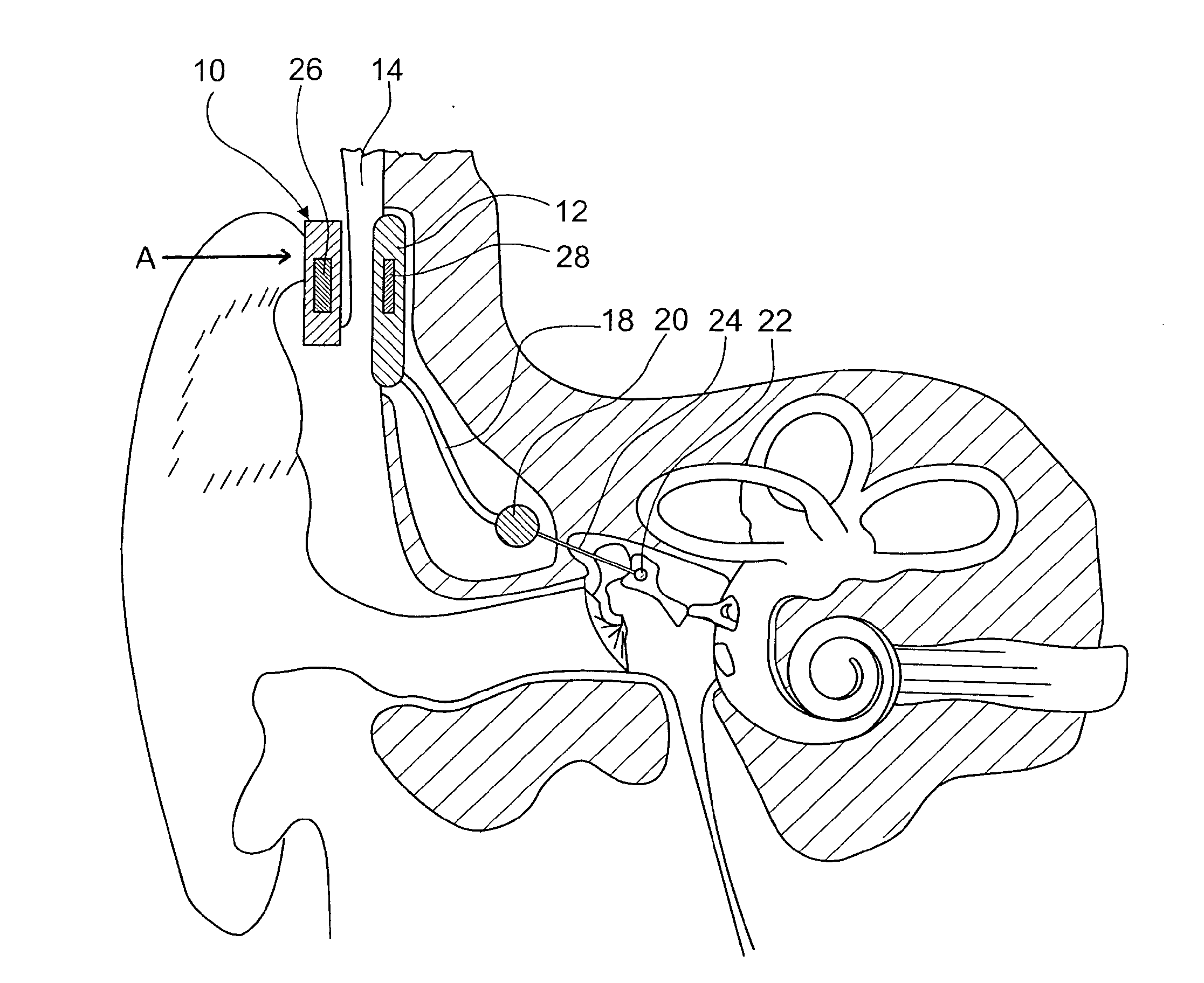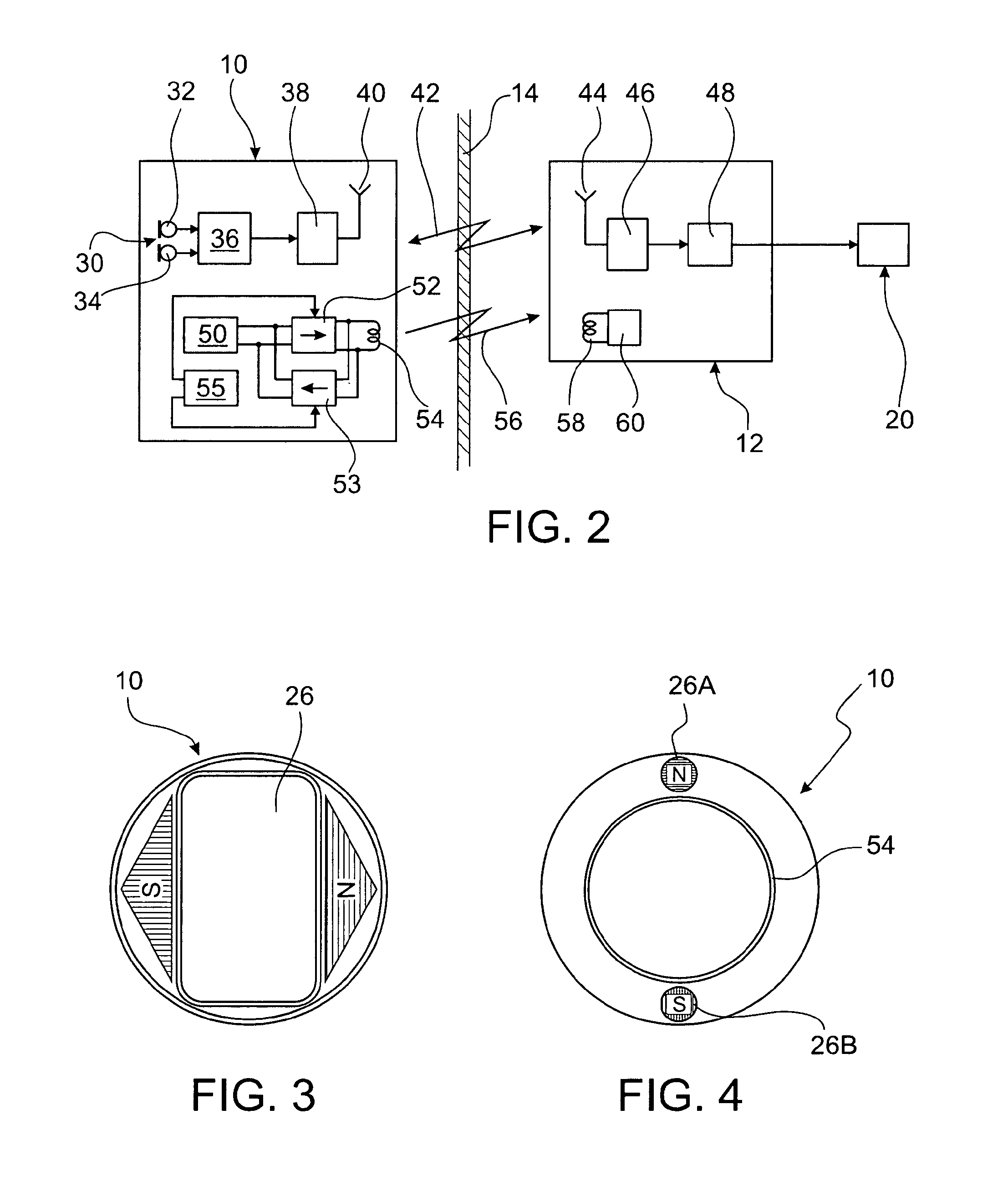Rechargeable partially implantable hearing instrument
a partially implantable, hearing instrument technology, applied in the direction of deaf-aid sets, electrical devices, deaf-aid sets, etc., can solve the problems of high operating cost, high operating cost, corrosion and malfunction, etc., and achieve the effect of keeping the complexity of the manufacturing process and the space requirements of the hearing instrument relatively low
- Summary
- Abstract
- Description
- Claims
- Application Information
AI Technical Summary
Benefits of technology
Problems solved by technology
Method used
Image
Examples
Embodiment Construction
[0020]FIG. 1 shows a cross-sectional view of the mastoid region, the middle ear and the inner ear of a patient after implantation of an example of a hearing aid according to the invention, wherein the hearing aid is shown only schematically. The system comprises an external unit 10, which is worn outside the patient's body at the patient's head, and an implantable unit 12, which is implanted under the patient's skin 14, usually in an artificial cavity created in the user's mastoid. The implantable unit 12 is connected via a cable assembly 18 to an actuator 20. While in FIG. 1 an electromechanical actuator coupled to an ossicle 22 via a coupling rod 24 is shown, the actuator 20 also may be an electromechanical actuator coupled directly to the cochlear wall, an actuator directly acting on the perilymph or a cochlear electrode.
[0021]The external unit 10 is fixed at the patient's skin 14 in a position opposite to the implantable unit 12, for example, by magnetic forces created between a...
PUM
 Login to View More
Login to View More Abstract
Description
Claims
Application Information
 Login to View More
Login to View More - R&D
- Intellectual Property
- Life Sciences
- Materials
- Tech Scout
- Unparalleled Data Quality
- Higher Quality Content
- 60% Fewer Hallucinations
Browse by: Latest US Patents, China's latest patents, Technical Efficacy Thesaurus, Application Domain, Technology Topic, Popular Technical Reports.
© 2025 PatSnap. All rights reserved.Legal|Privacy policy|Modern Slavery Act Transparency Statement|Sitemap|About US| Contact US: help@patsnap.com



